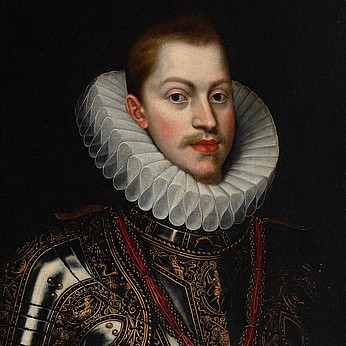Spanish school; second half of the XVII century. "Saint Anthony of Padua. Oil on canvas.
Lot 83
About Seller
Setdart Auction House
Carrer Aragó 346
Barcelona
Spain
Setdart Subastas was born in 2004 and is currently the first online art auction in Spain with solidity, prestige and reliability guaranteed by our more than 60,000 users. Setdart has a young, dynamic and enterprising team ready to successfully manage the purchase and sale of art works through custom...Read more
Estimate:
EUR€8,000 - EUR€9,000
$8,602.15 - $9,677.42
Absentee vs Live bid
Two ways to bid:
- Leave a max absentee bid and the platform will bid on your behalf up to your maximum bid during the live auction.
- Bid live during the auction and your bids will be submitted real-time to the auctioneer.
Bid Increments
| Price | Bid Increment |
|---|---|
| EUR€0 | EUR€10 |
| EUR€200 | EUR€25 |
| EUR€500 | EUR€50 |
| EUR€1,000 | EUR€100 |
| EUR€3,000 | EUR€200 |
| EUR€5,000 | EUR€500 |
| EUR€10,000 | EUR€1,000 |
| EUR€20,000 | EUR€2,000 |
| EUR€50,000 | EUR€5,000 |
About Auction
By Setdart Auction House
Nov 24, 2021
Set Reminder
2021-11-24 09:00:00
2021-11-24 09:00:00
America/New_York
Bidsquare
Bidsquare : Old Masters, Day 1
https://www.bidsquare.com/auctions/setdart-auction-house/old-masters-day-1-7873
Setdart Auction House sofia@setdart.com
Setdart Auction House sofia@setdart.com
- Lot Description
Spanish school; second half of the XVII century. "Saint Anthony of Padua. Oil on canvas. Measurements: 147 x 219 cm; 160 x 253 cm (frame). In this landscape format image the author presents us with a devotional scene starring St. Anthony of Padua and the Child Jesus, accompanied by several small angels. This iconography is generally used since the 17th century, becoming so well known and appreciated that no other element was needed to identify the theme, as can be seen in the present work. St. Anthony of Padua is, after St. Francis of Assisi, the most popular of the Franciscan saints. He was born in Lisbon in 1195 and only spent the last two years of his life in Padua. After studying at the convent of Santa Cruz in Coimbra, in 1220 he entered the Order of Friars Minor, where he changed his first name, Fernando, to Antonio. After teaching theology in Bologna, he traveled through southern and central France, preaching in Arles, Montpellier, Puy, Limoges and Bourges. In 1227 he participated in the general chapter of Assisi. In 1230 he was in charge of the transfer of the remains of St. Francis. He preached in Padua and died there at the age of 36 in 1231. He was canonized only a year after his death, in 1232. Until the end of the 15th century, the cult of St. Anthony remained located in Padua. From the following century he became, at first, the national saint of the Portuguese, who put under his patronage the churches they built abroad, and then a universal saint. He is represented as a beardless young man with a large monastic tonsure, dressed in the brown habit of the Franciscans. One of his most frequent attributes is the book, which identifies him as a sacred writer. Another distinctive iconographic feature is the branch of lily, an element taken from his panegyrist Bernardino de Siena. St. Anthony is usually presented with the Child Jesus, in allusion to an apparition he had in his cell. It became the most popular attribute of this saint from the 16th century onwards, being especially popular in the Baroque art of the Counter-Reformation.
- Shipping Info
-
In-house shipping available. Please inquire at admin@setdart.com.
-
- Buyer's Premium



 EUR
EUR CAD
CAD AUD
AUD GBP
GBP MXN
MXN HKD
HKD CNY
CNY MYR
MYR SEK
SEK SGD
SGD CHF
CHF THB
THB

















